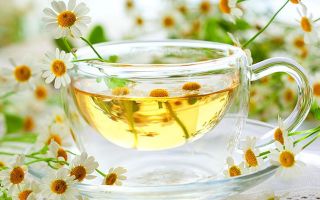Content
- 1 The chemical composition and calorie content of chamomile tea
- 2 Useful properties of chamomile tea
- 3 Chamomile tea for babies
- 4 Is chamomile tea possible for pregnant women and breastfeeding
- 5 What chamomile tea helps with
- 6 The use of chamomile tea in cosmetology
- 7 How to make chamomile tea
- 8 How you can use tea leaves chamomile
- 9 When and how to collect chamomile
- 10 Healthy Supplements
- 11 The harm of chamomile tea and contraindications
- 12 Conclusion
- 13 Chamomile tea reviews
The benefits and harms of chamomile tea are contained in its composition. This excellent component of traditional medicine is indispensable for many diseases as an adjuvant therapy. However, such tea is able not only to be beneficial, but also to have a negative effect on the body.
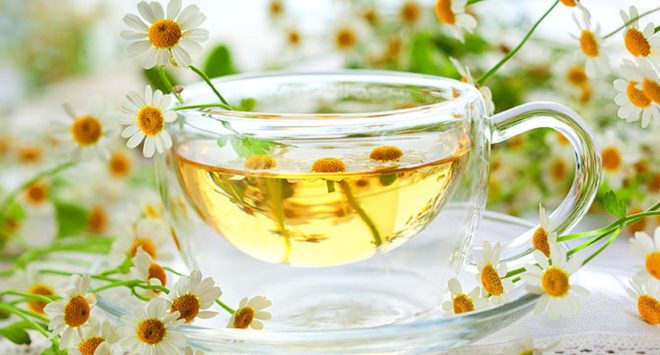
The chemical composition and calorie content of chamomile tea
Despite the fact that 97.5% of chamomile tea is water, the remaining amount is enough to contain the necessary vitamins and minerals. The drink contains about 1% essential oils, cadenine, pectin and nonylic acid.
100 g of chamomile tea contains about 12 mg of provitamin A, 1 mg of vitamins A and B9 each. The content of choline is 0.4 mg, vitamins B5 and B1 - 1 mg each.
Of the trace elements, the drink contains the most potassium (9 mg), followed by calcium and sodium (2 and 1 mg, respectively). Dried chamomile tea also contains fluoride, and its concentration, compared to other folk remedies, is quite high (100 g of tea contains 13 μg of fluoride).
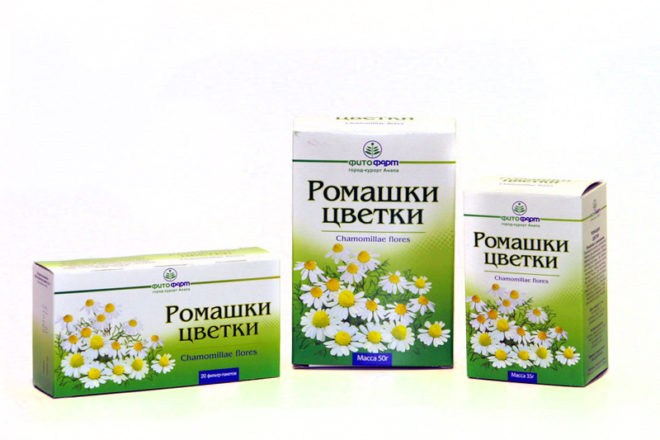
Sources indicate the calorie content of tea, equal to 1 kcal, which is explained by the rather low content of carbohydrates in it (about 200 mg per 100 g of drink).
Useful properties of chamomile tea
Due to the substances contained in chamomile, tea from it, first of all, has a sedative effect, that is, it is a sedative that helps with many diseases of the nervous system: insomnia, stress.
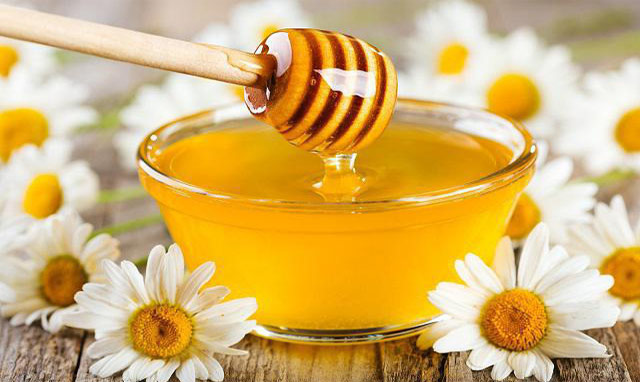
Chamomile tea is used for pancreatitis, other gastrointestinal diseases, menstrual pain, and many skin diseases. Chamomile with lemon balm is used to fight colds.
The benefits of chamomile tea for women
The substances contained in chamomile tea can help solve several important female problems. In particular, it is recommended to take chamomile tea at night during menstruation in case of severe menstrual pain. It is also recommended to be taken with a menstrual cycle that does not have a clear frequency. When menopause begins, it is dry chamomile tea that will help to cope with it, making it easier for it.
The benefits of chamomile tea for men
In the male body, chamomile tea finds its use as a maintenance therapy for prostatitis. Naturally, in this case, you should use the means of basic therapy and completely abandon bad habits.
Chamomile Slimming Tea
Recently, studies have begun to appear on the effect of chamomile tea on the processes of burning excess fat and improving metabolism. It is believed that regular consumption of the drink before each meal leads to an increase in gastric acid secretion, which promotes weight loss and, as a result, leads to weight loss.
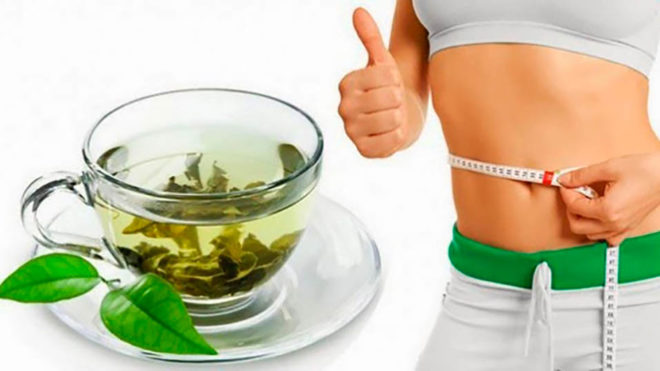
Chamomile tea for babies
The benefits of chamomile tea for children, in particular for babies, have long been proven by clinical trials.In this case, all the features of the plant are used:
- antiseptic - protects children from bacteria;
- sedative - produces a calming effect;
- strengthening - promotes the formation of immunity in infants;
- anti-inflammatory - accelerates wound healing, relieves inflammation.

Chamomile tea for a month-old baby is recommended in the following cases:
- relief of colds and coughing fits;
- to combat intestinal disorders in children; these include flatulence, colic, and bloating;
- with sleep disorders;
- if the child has skin inflammation.

The benefits of chamomile with honey for babies is a matter of controversy, as honey, either alone or in combination with various agents, can cause allergies and other undesirable effects in babies, in particular intestinal upset.
Is chamomile tea possible for pregnant women and breastfeeding
Chamomile is considered a safe remedy and can be used by mothers both throughout the entire period of pregnancy and during subsequent childcare and breastfeeding. This uses all the properties of tea listed earlier.
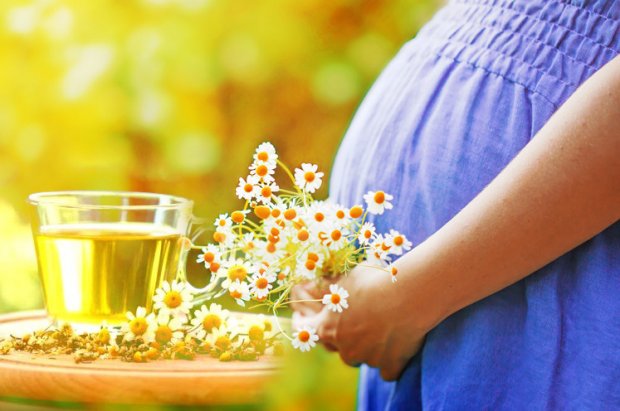
Mom uses chamomile both to calm the nervous system and to normalize the bowels. Not the least role is played by the antiseptic properties of chamomile - it is often used for inflammation and various diseases of the reproductive system in women during pregnancy. In particular, douching with chamomile and compresses from it are widespread. Also, tea is able to relieve some symptoms of toxicosis.
Chamomile tea for a nursing mother will be useful because, in addition to its complex effect, it helps to increase the secretion of breast milk. However, you should not be too zealous, too much tea (more than 1 liter per day), on the contrary, inhibits lactation.
What chamomile tea helps with
Consider using chamomile tea to relieve certain conditions.
Chamomile tea for coughing is applied half an hour before meals three times a day. Adults are advised to consume 200 ml at a time. A more gentle use is recommended for children under 12 years of age - 10 ml every hour during the day. It is recommended to add sugar, honey or lemon to improve the taste.
Chamomile tea for gastritis is used either in a high concentration of the drink, or with a sufficiently long infusion in a thermos (about 2-3 hours). This tea must be filtered and taken 3 times a day, 50 ml.
You can use chamomile tea for diarrhea, while its concentration should be the same as that of the drink for gastritis. In addition, at the same time with tea, it is recommended to take a decoction of yarrow.
Chamomile tea for poisoning can be used in both high and low concentrations, depending on the severity of the poisoning. In any case, there should be a lot of tea. It is recommended to drink at least 5 times a day from 100 to 200 ml of the drink.
Also, chamomile tea has established itself as a good remedy for eye inflammations and various forms of eye infections - from barley to conjunctivitis. In this case, it is necessary to apply cotton swabs with warm chamomile tea in high concentration to the eyes every 2-3 hours.
The use of chamomile tea in cosmetology
Chamomile is considered one of the most versatile cosmetic plants. There are many recipes for homemade masks, scrubs, compresses and lotions based on chamomile tea.
Chamomile face tea
The main directions of using chamomile tea for the face:
- cleansing, moisturizing and toning the skin;
- removal of blackheads, acne and unwanted pigmentation;
- normalization of the functioning of the epidermis.
The use of chamomile tea for facial care has different implementation options.
The simplest is to use regular tea for washing or using it as a component for lotions.In addition to cleansing and disinfecting the skin, chamomile tea also has a lightening effect.
More complex are special masks based on chamomile tea. Examples of recipes for face masks:
- Glycerin: 100 ml of chilled tea is mixed with 5 ml of glycerin. The mask is applied twice a day.
- Honey mask: 50 ml of freshly prepared tea is mixed with 2 tablespoons of bread crumb and 1 teaspoon of honey. Application - every 2-3 days.
- Aloe mask: 20 ml chamomile tea, 2 tbsp. l. cosmetic clay, 20 ml of aloe juice and 10 ml of honey are mixed and left for 48 hours. If desired, add rosemary essential oil to the mask. Application - once a week.
For hair
For hair, both pure tea and various products based on it are also used. The most common use is rinsing the hair after shampooing. In this case, both warm and chilled tea can be used.
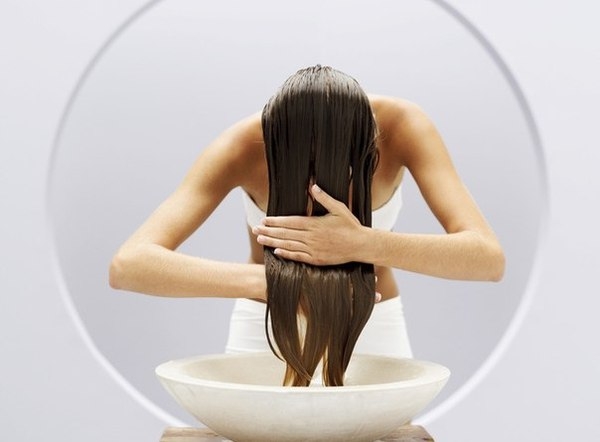
A wide variety of hair care products can be prepared from the beverage. These can be both mixtures of chamomile tea with infusions of other plants (for example, nettle, lemon or laurel leaves, calendula, burdock, and others), and more complex compositions - masks or balms.
An example is the following mask: add 10 ml of honey, brandy and 5 ml of lemon juice to 100 ml of chamomile tea. The mask is applied to clean hair, which is wrapped in plastic wrap. In this state, the hair is kept for 20 minutes, after which the mask is washed off.

How to make chamomile tea
Making chamomile tea does not require boiling. Most often, dried flowers are simply filled with boiling water. If a higher concentration of the drink is required, it is additionally infused in a water bath (no more than 20 minutes) while using the minimum heating.
How to make chamomile tea
Let's take a look at how to make chamomile tea. For one glass of tea, take from 1 to 2 teaspoons of dried flowers. The chamomile flowers filled with boiling water are insisted for 10 minutes, after which the infusion is filtered and drunk. You can add honey or sugar to the infusion.

The pure taste of chamomile may not be very pleasant to some people. Therefore, it is often brewed with the use of other medicinal plants - while chamomile does not lose its beneficial properties.
To make two servings of chamomile mint tea, you will need the following ingredients:
- chamomile flowers - 2 teaspoons;
- mint - 4 leaves fresh or ½ teaspoon dried;
- lemon zest - 30 g;
- honey - 3 teaspoons.
Chamomile with mint is poured into 0.5 liters of boiling water and infused for 5 minutes. Then grated zest is added to it, and the resulting composition is infused for another 5 minutes. After that, the drink is filtered and honey is added to it.
How you can use tea leaves chamomile
Re-using chamomile from tea leaves is not advisable. When brewing, all the nutrients from the dried flowers go into the infusion. And all the solid fraction that remains during filtering consists of partially destroyed fiber, which is not absorbed by the human body.
When and how to collect chamomile
Self-collection is a guarantee that a natural and environmentally friendly product will be received. Chamomile collection must be carried out in ecologically clean places, for which the following characteristic features can be indicated:
- distance from industrial enterprises at least 10 km;
- distance from railways and highways at least 1 km;
- the absence of landfills and sedimentation tanks in the immediate vicinity of the collection site;
- lack of nearby agricultural land.
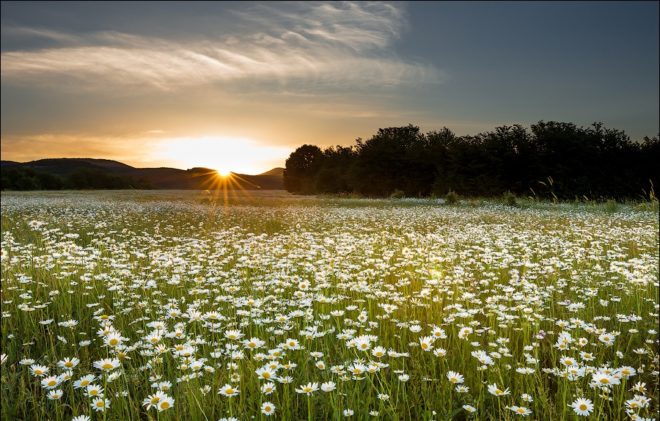
The harvest time should correspond to the flowering period of the plant. Thus, it will be possible to achieve the maximum concentration of nutrients in it. Chamomile bloom, depending on climatic characteristics and weather conditions, begins in the second decade of May and lasts about 1.5 months.
But collecting chamomile flowers is only half the problem. Without proper preparation of the material, the collection process will be useless. Drying chamomile should be carried out in a shaded place in a constantly ventilated area. This can be an attic or a room in a house, in extreme cases, you can do it on the terrace or just under a canopy in the yard.
At the same time, chamomile must be spread on the surface in a relatively thin layer. For 1 sq. m area accounts for 1 kg of collected material. The drying process lasts about a week and requires daily mixing of the flowers, while being careful not to let the petals fall off. Chamomile is considered dried when the flowers can be easily ground into dust. To speed up the process, it is allowed to dry chamomile in the oven at a low temperature.
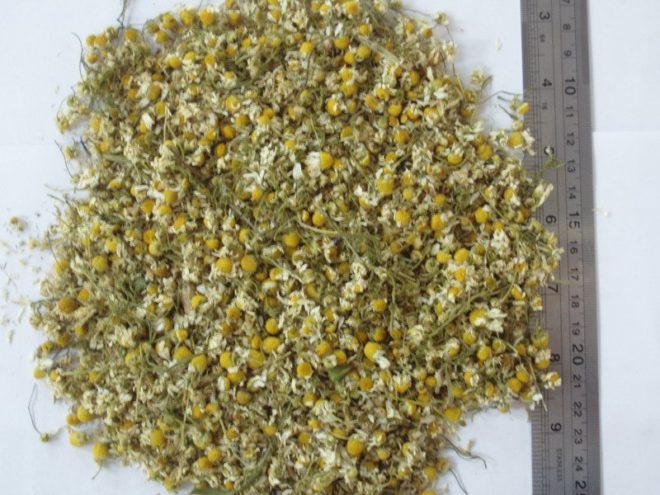
Store dried chamomile in paper or cardboard packaging. The use of fabric bags is allowed. The healing properties of dried chamomile persist for a year.
Healthy Supplements
In addition to the previously discussed chamomile tea with mint and honey, there are many other recipes for its preparation. Many other useful ingredients can be added to tea. These can be:
- oregano;
- rosehip;
- lingonberry;
- Melissa;
- Birch buds;
- yarrow;
- lemon;
- thyme.
The harm of chamomile tea and contraindications
Like any medicine, chamomile tea can harm the body if misused. In the vast majority of cases, this may be due to contraindications.
The main contraindication for chamomile tea is chamomile allergy. It is quite simple to determine it: you should drink a small amount of tea for a sample and observe your body. If itching or rash appears, use of chamomile tea is not permissible.
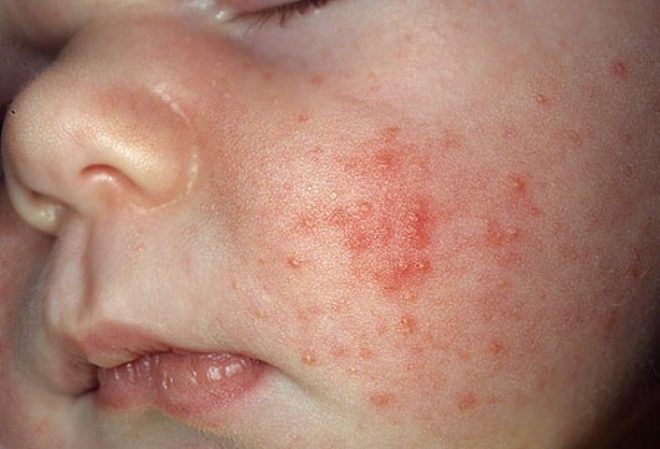
Chamomile tea in large quantities is undesirable during pregnancy, as it stimulates the production of estrogen, leading to its interruption.
An overdose of tea can lead to a wide variety of symptoms, including:
- nausea and vomiting;
- pain in the head and muscles;
- cough;
- decreased tone.
In some cases, heartburn from chamomile tea is observed even when the dosages are observed.
In addition, there are a number of plants with which chamomile tea is not recommended. Chamomile is a blood thinner, therefore, it cannot be used with plants that contain many anticoagulants, such as cherries, red currants, thorns and blueberries.
Due to the presence of weak psycholeptics, chamomile tea soothes. However, it cannot be combined with sedatives. That is, the use of herbs that also contain sedatives with chamomile is unacceptable. Such herbs include motherwort, hops, rue and string.
Diuretics are also undesirable when combined with chamomile.
Conclusion
The benefits and harms of chamomile tea are known to almost everyone who has come across traditional medicine. This drink is widely used to treat various diseases and carry out preventive measures. Its benefits far outweigh the side effects; and even then, the latter are manifested in the case of a clear violation of contraindications.

